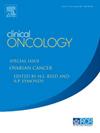Postoperative Circulating Tumour DNA in Predicting Recurrence of Non-small Cell Lung Cancer: A Systematic Review and Meta-analysis
IF 3
3区 医学
Q2 ONCOLOGY
引用次数: 0
Abstract
Aims
Circulating tumour DNA (ctDNA) has become a noninvasive biomarker for dynamic monitoring of tumours. However, available evidence on postoperative ctDNA in patients with non-small cell lung cancer (NSCLC) is limited. This systematic review and meta-analysis aims to appraise the prognostic value of postoperative ctDNA in NSCLC.
Materials and methods
PubMed, Cochrane, Web of Science, and Embase were retrieved until May 20, 2024, to identify potentially eligible studies. The primary outcomes were relapse-free survival (RFS) and overall survival (OS) based on the status of postoperative ctDNA. Subgroup analyses were conducted according to baseline characteristics. Data quality were appraised using the Newcastle-Ottawa scale. The meta-analysis was performed using Stata18.
Results
Total of 13 studies on predicting NSCLC recurrence based on postoperative ctDNA were included. According to the meta-analysis, postoperative ctDNA-positive patients had markedly shorter RFS (HR = 6.05, 95% CI: 4.48–8.18, P < 0.01) compared to ctDNA-negative patients. Furthermore, ctDNA-positive patients exhibited a shorter OS (HR = 4.53, 95% CI: 2.56–8.02, P < 0.01) than ctDNA-negative patients.
Conclusion
Postoperative ctDNA detection can predict tumour recurrence and overall survival in NSCLC patients.
PROSPERO registration number
CRD42024577421.
术后循环肿瘤DNA预测非小细胞肺癌复发:系统回顾和荟萃分析
循环肿瘤DNA (ctDNA)已成为肿瘤动态监测的一种无创生物标志物。然而,关于非小细胞肺癌(NSCLC)患者术后ctDNA的现有证据有限。本系统综述和荟萃分析旨在评估ctDNA在非小细胞肺癌术后的预后价值。材料和方法检索spubmed、Cochrane、Web of Science和Embase,直至2024年5月20日,以确定潜在的符合条件的研究。主要结局是基于术后ctDNA状态的无复发生存期(RFS)和总生存期(OS)。根据基线特征进行亚组分析。使用纽卡斯尔-渥太华量表评估数据质量。meta分析采用Stata18进行。结果共纳入13项基于术后ctDNA预测非小细胞肺癌复发的研究。meta分析显示,术后ctdna阳性患者的RFS明显缩短(HR = 6.05, 95% CI: 4.48-8.18, P <;0.01),与ctdna阴性患者相比。此外,ctdna阳性患者表现出更短的OS (HR = 4.53, 95% CI: 2.56-8.02, P <;0.01)。结论ctDNA检测可预测非小细胞肺癌患者术后肿瘤复发及总生存期。普洛斯彼罗注册号crd42024577421。
本文章由计算机程序翻译,如有差异,请以英文原文为准。
求助全文
约1分钟内获得全文
求助全文
来源期刊

Clinical oncology
医学-肿瘤学
CiteScore
5.20
自引率
8.80%
发文量
332
审稿时长
40 days
期刊介绍:
Clinical Oncology is an International cancer journal covering all aspects of the clinical management of cancer patients, reflecting a multidisciplinary approach to therapy. Papers, editorials and reviews are published on all types of malignant disease embracing, pathology, diagnosis and treatment, including radiotherapy, chemotherapy, surgery, combined modality treatment and palliative care. Research and review papers covering epidemiology, radiobiology, radiation physics, tumour biology, and immunology are also published, together with letters to the editor, case reports and book reviews.
 求助内容:
求助内容: 应助结果提醒方式:
应助结果提醒方式:


